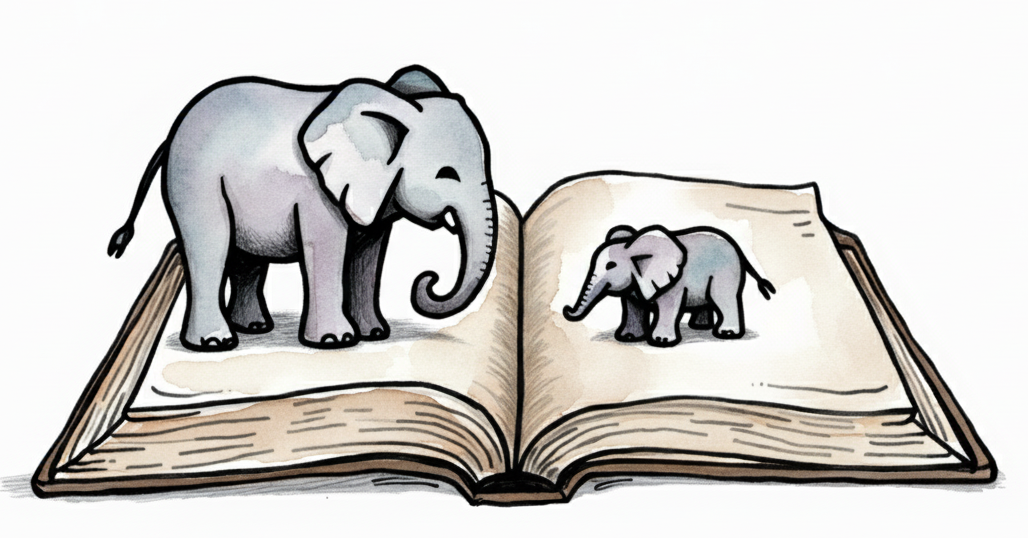11 Novels about Elephants

In literature, elephants never forget—and neither will you after reading these stories. These novels understand that elephants aren't just massive animals; they're repositories of ancient wisdom, fierce protectors of family bonds, and mirrors reflecting our own capacity for both cruelty and grace. From circus rings to African savannas, these stories explore the profound connections between humans and these gentle giants, proving that the largest hearts often belong to the largest creatures.
-
Water for Elephants by
Set during the Great Depression, Sara Gruen’s novel follows Jacob Jankowski, who finds a new life with a traveling circus after a personal tragedy. He forms a deep bond with Rosie, an elephant who seems un-trainable but is actually exceptionally intelligent and misunderstood.
Their relationship becomes the heart of the story, exploring themes of compassion and cruelty in the rough-and-tumble circus world. Rosie is not merely a spectacle but a complex character whose emotional depth mirrors the human drama around her.
-
Leaving Time by
Jodi Picoult weaves a mystery around 13-year-old Jenna Metcalf’s search for her mother, an elephant researcher who vanished years earlier. To find her, Jenna immerses herself in her mother’s scientific notes, learning about the profound grief, memory, and maternal bonds within elephant herds.
The novel uses the complex emotional lives of elephants as a powerful parallel to Jenna’s own journey of loss and discovery, creating a moving exploration of how memory shapes both human and animal lives.
-
The Magician's Elephant by
In this enchanting fable, an orphan named Peter asks a fortune teller if his sister is alive, and the answer sends him on a quest for a mysterious elephant. When a magician accidentally conjures an elephant into the town square, the lives of the townspeople are changed forever.
The gentle, displaced elephant becomes a living symbol of hope and wonder, connecting a cast of lonely characters and proving that the impossible can come true.
-
An Elephant in the Garden by
Michael Morpurgo gives a touching wartime narrative centered around Marlene, an elephant rescued from the Dresden Zoo during the final days of World War II. As a German family flees the city's bombardment, they travel with Marlene, who becomes an invaluable and comforting presence amid the chaos.
Morpurgo portrays the elephant as a source of calm resilience, illustrating the powerful capacity for human-animal bonds to provide hope in the darkest of times.
-
The Tusk That Did the Damage by
This novel explores the violent collision of humans and elephants in South India from three distinct perspectives: a poacher, a documentary filmmaker, and an elephant known as the Gravedigger. The narrative provides a nuanced look at the devastating consequences of habitat loss and poaching, giving voice to the elephant’s rage and grief.
By refusing to paint a simple picture of victim and villain, James reveals the intricate, tragic tensions that arise when human and animal worlds clash.
-
The White Bone by
Told entirely from the perspective of African elephants, this imaginative and ambitious novel follows a herd searching for the "White Bone," a mythical object that will lead them to safety during a devastating drought.
Readers are immersed in the elephants' world, experiencing their intricate social structures, communication, memories, and spiritual beliefs. Gowdy’s unique approach offers a profound and intimate portrait of elephants as thinking, feeling beings navigating a world of natural hardship and human-inflicted violence.
-
Elephant Run by
Set in Burma during World War II, this young adult adventure follows Nick Freestone after his father’s plantation is seized by Japanese forces. Nick must rely on the help of a local village and its working elephants to survive in the jungle and plot a daring escape.
The elephants in the story are depicted as intelligent, powerful, and loyal partners essential for survival, showcasing their strength and deep connection to the people who care for them.
-
The Jungle Book by
While Mowgli is the star, the elephants in Kipling’s classic stories command immense respect. Hathi, the great elephant, is the living embodiment of jungle law—a figure of ancient wisdom, authority, and memory. He and his herd represent order and dignity in the wild.
Kipling portrays elephants as noble beings whose judgment is sought and whose power is revered, establishing them as the solemn patriarchs of the jungle hierarchy.
-
Hannah's Dream by
Sam, the longtime caretaker at a small zoo, is determined to give his beloved elephant, Hannah, a better life before he retires. Lonely since the death of her companion, Hannah dreams of freedom and the companionship of other elephants. The novel tenderly explores Hannah’s emotional depth and intelligence through her profound bond with Sam.
It is a poignant story about interspecies friendship and a critique of keeping such socially complex animals in captivity.
-
The Story of Babar by
This classic of children’s literature introduces Babar, a young elephant who flees the jungle after a hunter kills his mother. He travels to a city, where he is befriended by a kind old lady who teaches him the ways of human civilization.
Upon returning to the forest, his newfound knowledge and worldly experience lead him to be crowned king of the elephants, blending themes of loss, acculturation, and leadership in a timeless tale.
-
Hang the Elephant by
In this modern urban fantasy, the protagonist is an undead wizard who solves supernatural crimes with her partner, Argyle, who happens to be a teleporting, tweed-wearing elephant. Far from a mere sidekick or beast of burden, Argyle is a fully-fledged character with his own wit, personality, and crucial role in the investigations.
The novel blends noir, comedy, and magic, presenting an elephant as a sophisticated and indispensable partner in a uniquely imaginative world.